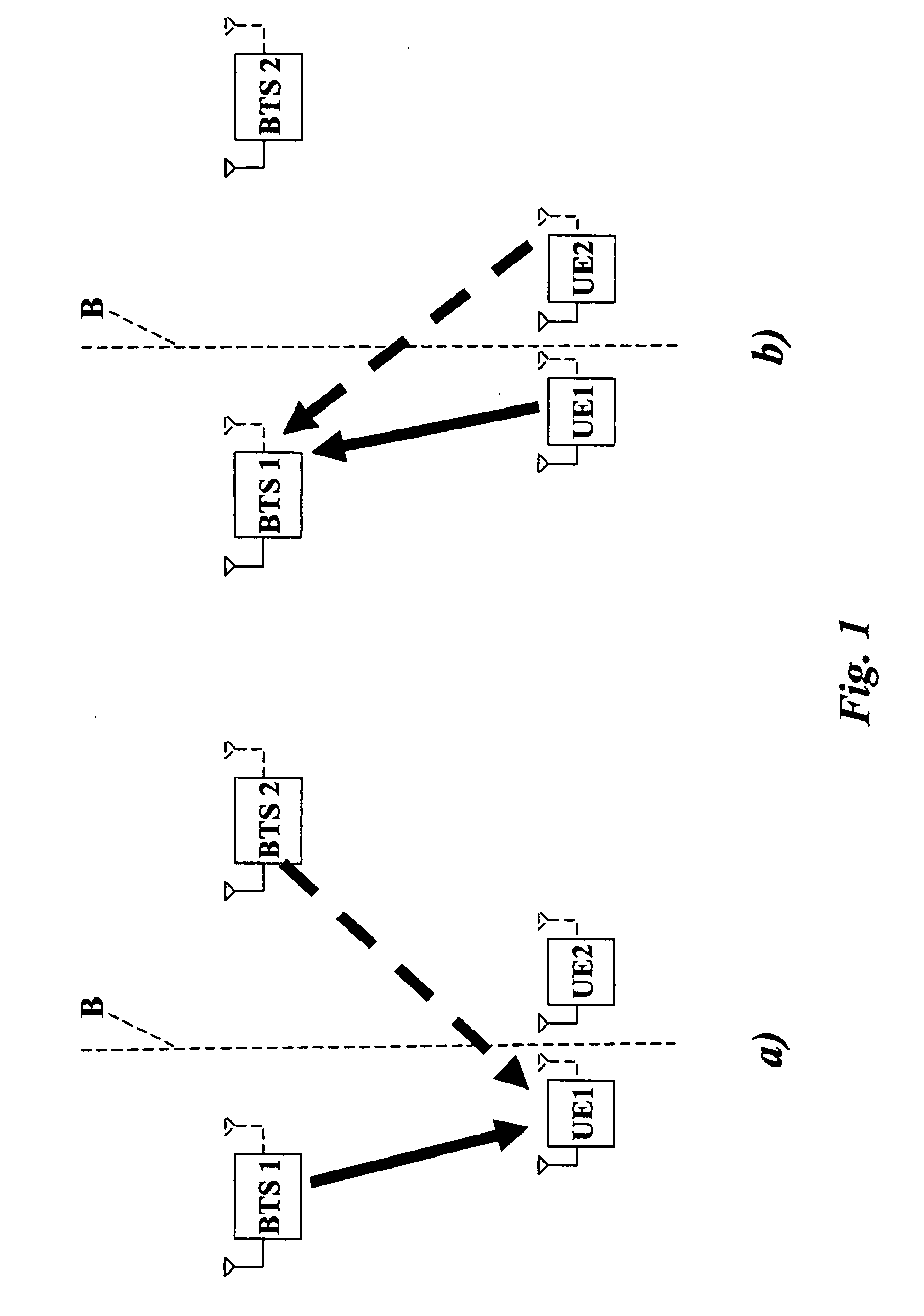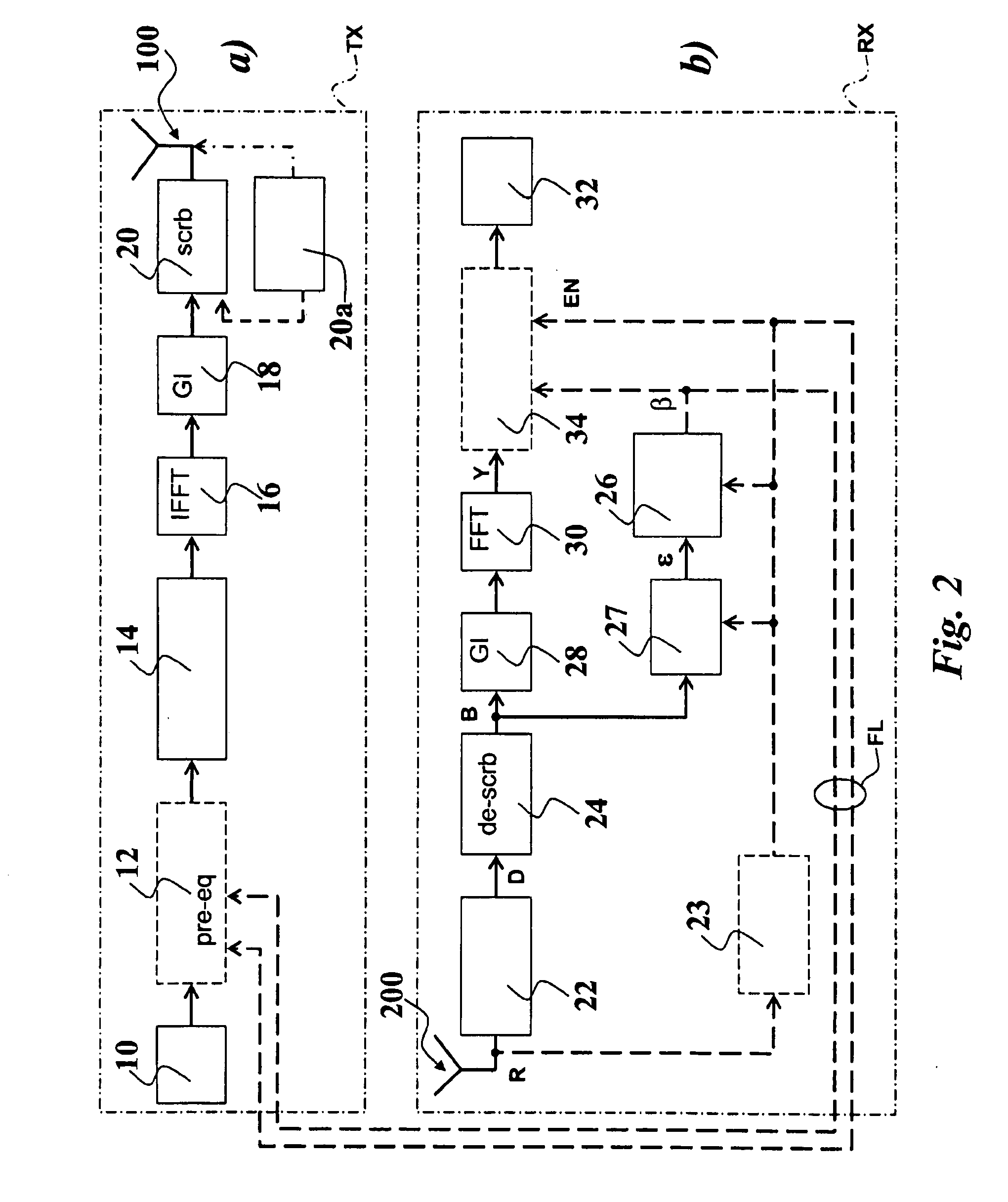Scrambled multicarrier transmission
a multi-carrier transmission and scramble technology, applied in the field of radio communication systems, can solve the problems of interference mitigation processing, no information about the interferencer is usually recovered/reconstructed, and hardly convenient solution
- Summary
- Abstract
- Description
- Claims
- Application Information
AI Technical Summary
Benefits of technology
Problems solved by technology
Method used
Image
Examples
Embodiment Construction
[0029]The exemplary transmission system described herein is an OFDM multi-carrier transmission system equipped with a SISO (Single-Input Single-Output) or MIMO (Multiple-Input Multiple-Output) antenna system. For generality, the system will be assumed to operate with N subcarriers, MT transmit (TX) antennas (designated collectively as 100 in both FIGS. 2 and 3) and MR receive (RX) antennas (designated collectively as 200 in both FIGS. 2 and 3).
[0030]The data part of the signal at the m-th TX antennas can be expressed as:
xm(t)=1Nsm(t)∑n=0N-1Xm(n)j2πnt / N,m=1…MT(1)
[0031]where sm is a complex scrambling sequence. This sequence can be specific for the m-th TX antenna of a given BTS or be cell-specific or sector-specific. The sequence can have a time period equal to one or more OFDM symbols (in practical implementations could be as long as a Transmission Time Interval TTI) and will typically have a unitary module. Certain points on the periodicity of the scrambling sequence will be furthe...
PUM
 Login to View More
Login to View More Abstract
Description
Claims
Application Information
 Login to View More
Login to View More - R&D
- Intellectual Property
- Life Sciences
- Materials
- Tech Scout
- Unparalleled Data Quality
- Higher Quality Content
- 60% Fewer Hallucinations
Browse by: Latest US Patents, China's latest patents, Technical Efficacy Thesaurus, Application Domain, Technology Topic, Popular Technical Reports.
© 2025 PatSnap. All rights reserved.Legal|Privacy policy|Modern Slavery Act Transparency Statement|Sitemap|About US| Contact US: help@patsnap.com



